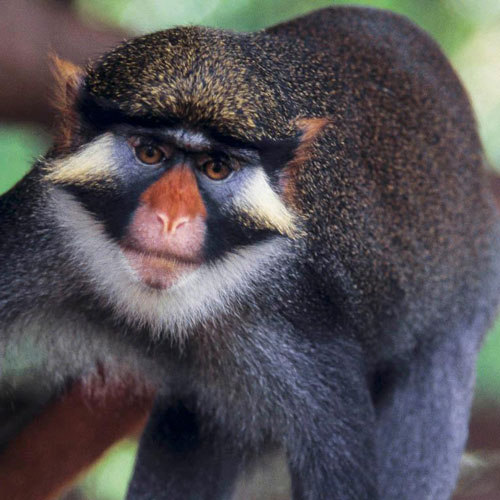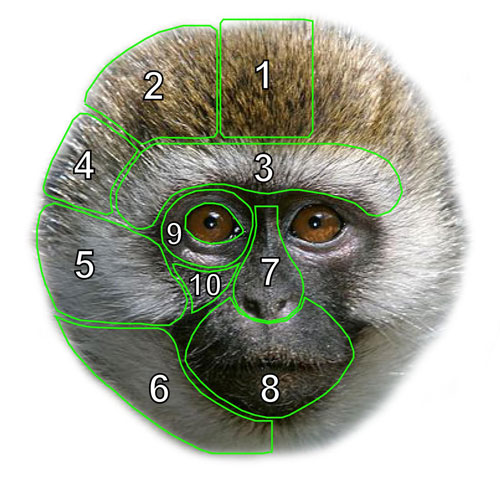
A Red-eared guenon (Cercopithecus erythrotis camerunensis). This species uses its colorful face during displays that allow individuals to recognize each other and defend territories.

The face of a vervet monkey illustrating the procedure used to characterize facial color pattern complexity.
The study found that species that live in larger (more social) groups have faces with more complex color patterns than those that live in smaller groups. These color patterns have also evolved to be more complex when closely related species live within the same area, possibly making it easier to tell each other apart.
Geographic location and environmental factors were also significant for the evolution of facial colors of the monkeys and apes studied. Species that live closer to the equator in dense, humid forests had darker faces than those who live in less-vegetated and dry areas further away from the equator. When living in a dark forest environment, darker face colors potentially help camouflage these primates so they go unnoticed by predators. Interestingly, only primate species living in Africa show these trends, potentially because environmental gradients are more accentuated in this continent.
“Our study helps explain the evolution of two major aspects of primate facial diversity, color patterning and darkness. We demonstrate that a combination of behavioral and ecological pressures may underlie the evolution of outstanding anatomical diversity,” Dr. Santana said. “These types of complex interactions are likely operating in many other mammal groups.”
This study is a continuation of research by Dr. Santana and colleagues. In a previous study analyzing facial colors and complexities of New World monkeys, Santana found monkeys living in dark forests had darker colors on their faces compared to those that live in different environments, similar to the results for Old World monkeys and apes. However, one of the social aspects of this present study is the opposite of the results for New World monkeys; New World monkeys that lived in smaller groups tended to have more complex color patterns than those who lived in larger groups. The researchers are looking forward to addressing what factors could be underlying these differences between New and Old World primates.
Study information
Sharlene E. Santana, Jessica Lynch Alfaro, Andrew Noonan & Michael E. Alfaro. Adaptive response to sociality and ecology drives the diversification of facial colour patterns in catarrhines. Nature Communications: November 11, 2013.

